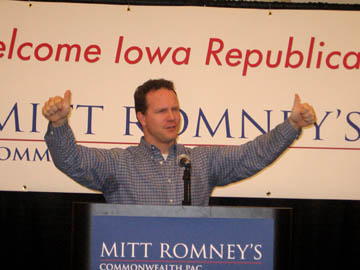This link provides a LOT of great up-to-date info on the current geography of FBS recruting.
First consider the national "heat map" and pay special attention to TX (Houston especialy), OH, and UT. Also notice that the Wasatch Front is a more impressive recruiting producer than larger western cities than Seattle, Portland, Vegas, and even Denver. That's pretty impressive.

Another interesting point is that Atlanta and Miami are the only two cities that are distinctly "hot" (orange or red) for EVERY P5 conference. Those are cities that every big school tries to recruit.
Now here's the Big12 "heat map" below:

The first thing that sticks out is how well the Big12 recruits and dominates it's own footprint ... espcecially the I-35 corridor (San Antonio,Austin, Dallas/FtWorth, OKC, Kansas City). However, all the P5 conferences dominate their own footprint.
One thing to consider is how effectively or ineffectively the Big12 currently recruits the host cities/states of the 3 top expansion candidates: BYU, Cinci, and Houston. Houston is they second "hottest" spot on the map, only trailing Dallas/Ft Worth. Now look at Cincinnati back on the national map and see that it's the "hottest" FBS recruiting city in Ohio (looks tied with Cleveland). Now look at how Big12 recruiting is doing in Cincinnati below. That's right, the Big12 only has 5 total players (3 tightly bunched) from Cincinnati.

Drilling down on how the Big12 is currently recruiting Utah is even more interesting:

The Baylor kid from Park City is THE ONLY kid from Utah currently on a Big12 roster.
My point here is not that the Big12 needs or wants to go out and start recruiting these areas (though that wouldn't hurt), but that these represent essentially untapped markets for the conference. By expanding their footprint to include teams from Utah and Ohio the Big12 is truly opening up new and fertile recruiting grounds. By adding BYU especially, they are adding a team that will give them essentially ZERO relative competition within their current I-35 recruiting corridor. Even further, adding BYU puts more recruiting competition pressure on another P5 conference (the PAC12) since the LDS base is mostly (80%+) within the footprint of the PAC12. Granting official P5 status on BYU will result in even more recruiting pressure to win head-to-head battles with PAC12 schools on top western recruits.
I took this site's data about the percentage of all recruits that come from each state and then compared that to the 2015 population data of what percentage of the total US population lives in each state. The data is in a spreadsheet here.
https://twitter.com/jjfuller72/status/769162047359709184
In reality, all three schools are located in GREAT states for per-capita recruiting. Texas is 7th, Ohio is 8th, and Utah is 9th (interestingly, OK is right there in 10th) for the best states in the nation for producing FBS recruits. This data is a slight change from another similar recruiting geographical analysis from 3 years ago.
http://www.footballstudyhall.com/2013/9/11/4718442/college-football-state-texas-california-florida
https://twitter.com/jjfuller72/status/727737356820819969
Notice that those same 4 states were grouped together again, but the group, en toto, moved up a spot and the order shuffled with Utah jumping over Oklahoma.
Looking back up at the current Big12 recruiting heat map shows that they currently recruit the Houston area strongly despite going up against TAMU, many SEC schools (esp LSU), and even the Houston Coogs. Of note, there are many who argue that the Big12 has been losing the Houston market to the SEC ... both in TV viewers and in recruiting; they (I'm looking at you Trevor Maitich) argue that this is why it's imperative to add UH to the Big12 to capture back that market that they're losing. First off, is the Big12 really losing that market in recruiting? By my eyeball test, the "hotness" of the map slightly favors the Big12 over the SEC in Houston (see SEC map below):

Drilling down on Houston shows that they get nearly ALL their recruits from within a 200 mile radius. Below is a map of AAC recruiting of the Houston region.

Further confirming this small footprint idea is the evidence that Houston is 7th out of all 128 FBS schools in the least average distance from home a schools' recruits come from. Part of this is geographical as the western schools tend to have the longest distance while the south-eastern schools have the shortest distance.

My point is that adding Houston adds another level of competition for the current 10 Big12 schools within their 2nd most recruited city in the nation. I don't think they want that, do you? Conversely, my perusal of the map shows that UH only drew 7 players from the massive recruting market of Dallas/Ft. Worth. Elevating Houston to P5 status would instantly create another "mouth to feed" and make recruting that city that much harder. Ask Texas and Charlie Strong if they're enjoying losing recruiting battles to TCU. That's yet another reason I think that the whole "UT/TTU want Houston" movement is just a political nicety ... playing nice and saying the right things in public for the hometown kid, but not really wanting/planning to invite them to the dance. I know people at OSU and KSU are on the record saying that they don't want Houston in the league because it would make it harder to recruit the best kids out of Houston. I tend to trust these professionals on this opinion.
Some caveats:
1) All of this assumes that the data at the linked website is correct
2) The data here represts recruiting largely from 2010- present, so there may have been some trend shifts more recently that comparative year-by-year data may reveal.







